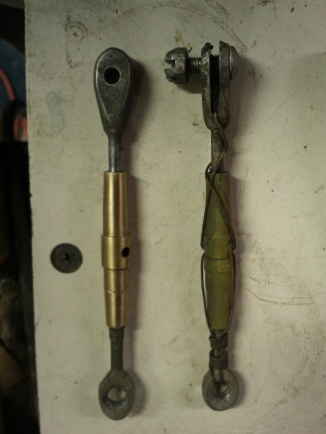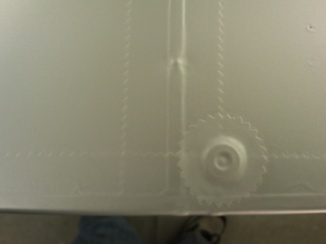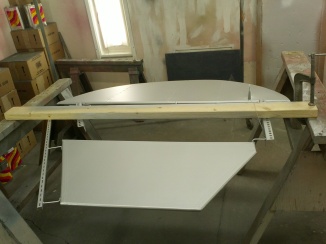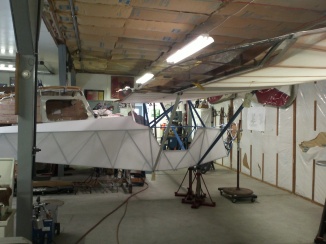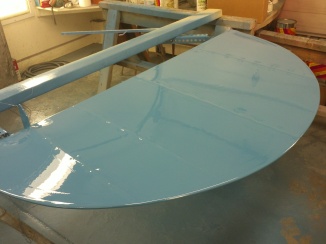
The rudder has been sprayed blue to match the fuselage. We had to put two coats of white over the silver coat to act as a primer, then three more coats of blue. On the last coat we put the paint in the freezer, along with some reducer the paint dries much slower resulting in a much better finish. This paint flows out after it is sprayed on, too thick of paint and you get runs, too thin and the surface is rough, it has to be just right to get a great finish. The picture shows it glossy because it was just sprayed. We have to let the rudder sit for at least two weeks to degas, or the fumes to all escape the envelope, before we can start painting the tail numbers on it. After that we will rub it out with a rubbing compound, a coat of wax and it will be ready to hit the skies!
